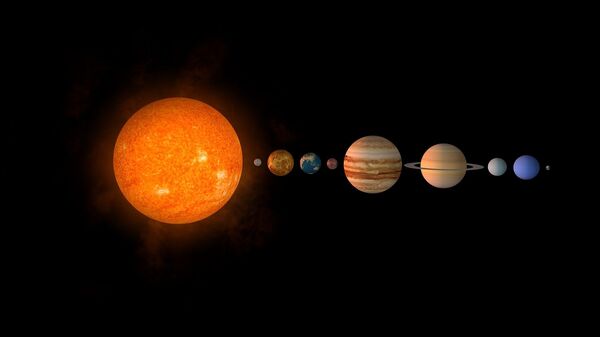New stars of all shapes and sizes are born in vast star-forming regions. These freshly formed heavenly bodies are surrounded by a sphere of dense gas and dust — dubbed "the protoplanetary disc" — and within these areas, galactic material coagulates, forming planets in the process. However, stars are invariably born in clustered groups, meaning they often shine on one another's discs, the effect of which is to warm the outer parts of the disc up, causing it to lose material.
This process is known as disc evaporation, and has been documented by scientists for a number of years.
It was hitherto hypothesized that this only occurred in instances where very large, exceptionally bright stars shone on protoplanetary discs.
Fledgling stars try to prevent their neighbours from birthing planets, research from @TomHaworthAstro reveals https://t.co/bW7CKHByBJ pic.twitter.com/Lp31ZZVdA5
— Imperial College (@imperialcollege) March 29, 2017
Now however, researchers at Imperial College London have discovered protoplanetary discs shone on by even small, weakly burning stars can also shed material — the only difference is the degree of evaporation, and the speed with which material evaporates.
The team decided to use protoplanetary disc called IM Lup, belonging to a star similar to the Sun, as an effective test subject. As the light shining on the disc is so much weaker than that shining on known evaporating discs, conventional theories would suggest there could be no evaporation, but IM Lup was surrounded by unexplained "halo" of material.
Using state of the art computer simulations, the researchers found that in fact, the disc is almost certain to lose material comparable to roughly 3,300 Earths over its 10 million year lifetime, despite the light from its nearest star being 10,000 times weaker than the stars that usually strip discs.
"The reason for this surprising result is that the disc is very big. The strongest nearby gravity source is the star, so if the disc were small the star would cling to it tightly through gravity, making it hard to strip material away. However IM Lup is very big, so the stars gravity only has a weak hold on the outer parts of the disc. Heating it up only a small amount (which is all the weak light can manage) can therefore strip away material surprisingly effectively," lead researcher Dr. Thomas Haworth told Sputnik.
The team also studied what the effect of evaporation would be on IM Lup's future, finding the disc will likely rapidly shrink in its first million years of existence — as IM Lup is less than a million years old presently, it is likely they caught it in the act of retreating. As Dr. Haworth explains, the findings have consequences for understanding the diversity of exoplanet systems, which are constantly being discovered. The phenomenon could significantly affect planets that can form around different stars — for example by limiting the maximum size a solar system can be.
When discussing solar systems or discs, distances are typically measured in astronomical units (AU), with one unit being the distance from the Sun to Earth.
The distance to Pluto is about 40AU, whereas IM Lup's disc reaches out to about 400AU. This means the star cannot hold on to the disc's outer parts so strongly, as its gravity would be much weaker that far out, leaving the fringes at the mercy of evaporation. The team's calculations show that if a disc started at 700AU in size, it would halve in size in the first million years of its life.
"We now have compelling evidence evaporation of discs happens in much weaker light environments than we used to think. We now need to work out what effect light is having on discs more generally and to work out what effect this shrinking of discs has on the types of planets that are born from them. Maybe discs that spend their time near massive, bright, stars form different planets to those shone on by intermediate or lower strength light? Our work will impact both research into discs, particularly young discs, and planet formation," Dr. Haworth concluded.
This is the first example ever discovered of disc evaporation due to a weak light source, and has motivated the team to search for evaporation elsewhere. By building a picture of the effect different types of light have on discs, they'll be able to build up a picture of how a disc's environment might affect the planets born from them.


